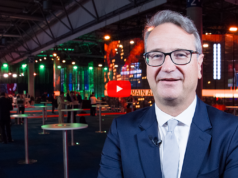 A recent systematic evaluation of the costs of elective endovascular aneurysm repair (EVAR) and open infrarenal abdominal aortic aneurysm (AAA) repair implies cost equivalence. This is the conclusion of Ruth M A Bulder (Leiden University Medical Centre, Leiden, The Netherlands) and colleagues in an Editor’s Choice paper in the November issue of the European Journal of Vascular and Endovascular Surgery (EJVES).
A recent systematic evaluation of the costs of elective endovascular aneurysm repair (EVAR) and open infrarenal abdominal aortic aneurysm (AAA) repair implies cost equivalence. This is the conclusion of Ruth M A Bulder (Leiden University Medical Centre, Leiden, The Netherlands) and colleagues in an Editor’s Choice paper in the November issue of the European Journal of Vascular and Endovascular Surgery (EJVES).
“Cost equivalence for EVAR and open repair occurs at a device cost of €13,000 for EVAR,” the authors write, leading them to infer that, for most routine repairs, EVAR is not costlier than open repair until at least the five-year follow-up mark.
Bulder and colleagues state that the suggested higher costs of EVAR hamper the choice of insurance companies and financial regulators for EVAR as the primary option for elective AAA repair. However, they add that arguments used in this debate are impeded by time-related aspects such as effect modification and the introduction of confounding by indication, and by asymmetric evaluation of outcomes. Therefore, they considered a re-evaluation, minimising the impact of their interferences.
The investigators performed a comparative analysis covering a period of exclusive open repair (1998–2000) and a period of established EVAR (2010–2012), collecting data from four hospitals in The Netherlands to estimate resource use. They estimated actual costs by benchmark cost prices and a literature review, and detail that costs are reported at 2019 prices. Bulder et al note that they applied a breakeven approach, defining the cost for an endovascular device at which cost equivalence for EVAR and open repair is achieved, to cope with the large variation in endovascular device costs.
Bulder et al compared 186 patients who underwent elective infrarenal AAA repair between 1998 and 2000 (the open repair period) and 195 patients between 2010 and 2012 (the EVAR period). They report that cost equivalence for open repair and EVAR was reached at a breakeven price for an endovascular device of €13,190. They detail that the main cost difference reflected the longer duration of hospital stay (ward and Intensive Care Unit [ICU]) of open repair (€11,644). Reintervention rates were similar for open repair and EVAR, at 24.2% and 24.6%, respectively (p=0.92), the authors write.
The investigators acknowledge certain limitations of the present study. For example, they write: “As the open repair period represents patients from 1998 to 2000, it is unclear to what extent the costs of open repair (procedural costs, and ICU, and ward stay) are influenced by current reductions in open repair volume (and thus team skills) on the one hand, and technical improvements on the other hand.” While Bulder et al illustrated the potential impact of these aspects using a sensitivity analysis, they note that this does not include underlying causes of altered hospital stay.
A further aspect not addressed in the study, Bulder and colleagues highlight, is that the lower threshold with EVAR may result in AAA repair in patients whose surgical treatment would have been withheld in the open repair era, which may result in the inclusion of more frail patients in the 2010–2012 period. They write: “Although it could be argued that this phenomenon would actually favour EVAR, it may also result in the treatment of patients who will not live long enough to benefit from the repair. This latter aspect will obviously negatively impact the cost-effectiveness of EVAR”.
Based on their instrumental variable analysis, the authors conclude that EVAR is not costlier than open repair. They summarise: “Considering the lower short-term mortality, faster recovery, and equal mid- and long-term survival, EVAR is a good first option for repair.”













